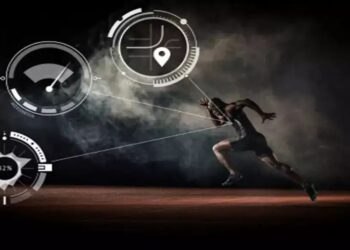 May is National Bike Month. Use it as a time to brush up on your safety practices and the rules of the road, recommends Mark Vautour, store manager at Landry’s Bicycles, which has locations in Boston, Braintree, Natick, Newton, Norwood, Westborough, and Worcester.
May is National Bike Month. Use it as a time to brush up on your safety practices and the rules of the road, recommends Mark Vautour, store manager at Landry’s Bicycles, which has locations in Boston, Braintree, Natick, Newton, Norwood, Westborough, and Worcester.
Vautour has worked at Landry’s for 22 years, has competed in triathlons across New England, and serves as a ride leader on group rides organized by his store. He offered the following five tips for riding safely this season.
Make sure your bike is tuned up
Before you even hit the road, you want to ensure that your bike is in good condition.
“Bring it into any local bike shop for a yearly tune up,” Vautour said. “They’re going to check every major system on the bike.”
The experts will look at things like your tires, brakes, and gears.
You also want to check yourself to make sure there’s enough air in your tires before you ride. The amount of air your tires require is printed on the side of each tire, according to Vautour. Additionally, you should lubricate your bike chain every week or so — you’ll know your chain needs it if your bike starts to sound dry or squeaky.
“You want to prevent long-term issues by staying on top of short-term issues,” Vautour said.
Avoid tech distractions
Absolutely do not wear headphones or use your phone when you ride, Vautour said.
“As much as we all love exercising with music, you use all your senses when you ride a bike,” he said. “Having a set of headphones in is going to prevent you from hearing a car when it comes up behind you.”
Also resist the urge to text while riding.
“Keep your phone in your pocket, keep your phone in your backpack,” Vautour said. “It’s no different if you’re riding a bike than when you’re driving. If you’re riding while on your phone, you’re distracted.”
Act like a car
In other words, you should obey all of the same rules of the road.
“Stop at red lights, obey the speed limit, signal when you are changing lanes,” Vautour explained. “Drivers want to know what you’re doing, so be predictable so drivers can expect what you are going to do next.”
That includes signaling with your hand.
“Most drivers understand best when you simply point in the direction you want to go,” Vautour said.
Remember the “ABCs of Awareness”
Vautour recommended following Trek’s “ABCs of Awareness,” which are based on research out of Clemson University in South Carolina.
The “A” stands for “Always on,” and refers to your bicycle’s lights.
“You should have a light on your bike and put it on every time you ride — day or night,” he said, because it makes you more visible to traffic.
The “B” stands for “Biomotion,” which means highlighting your body’s moving parts.
“If you have a reflective spot or bright piece of neon on your shoe, you’re more likely to catch a driver’s attention,” Vautour said. “Because your shoes are going around in circles and, therefore, that bright object — which in this case is your feet — is more likely to be seen because it’s in motion.”
The “C” stands for “Contrast.” Your clothes should contrast with your surroundings, Vautour explained. So when it comes to riding apparel, it’s best to wear something fluorescent during the daytime and reflective at night.
Plan a low-stress route if you can
As for your biking route, a little planning goes a long way, according to Vautour.
“If it’s rush hour, try not to go down Mass. Ave.,” he said. “Try to take back roads. Try to plan a route where you feel confident.”
If you have the time to do so, choose a route with less traffic, even if it’s longer. And if the Charles River bike path is accessible to you, don’t hesitate to ride it.
“Living in the city, the Charles River is, like, the biggest gift of the city,” Vautour said. “You get to ride along the river with no cars. What could be better?”
[“source=boston”]







